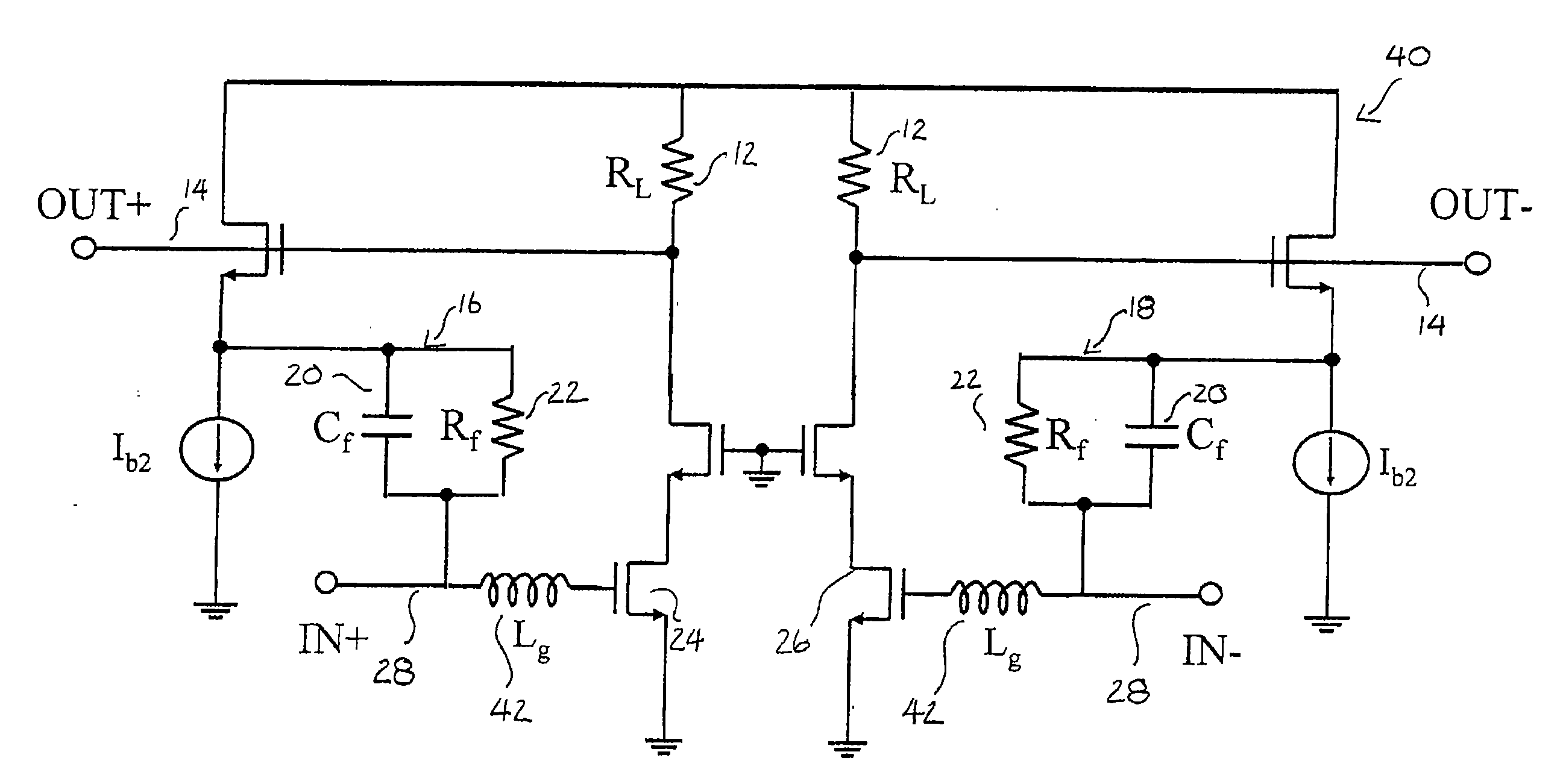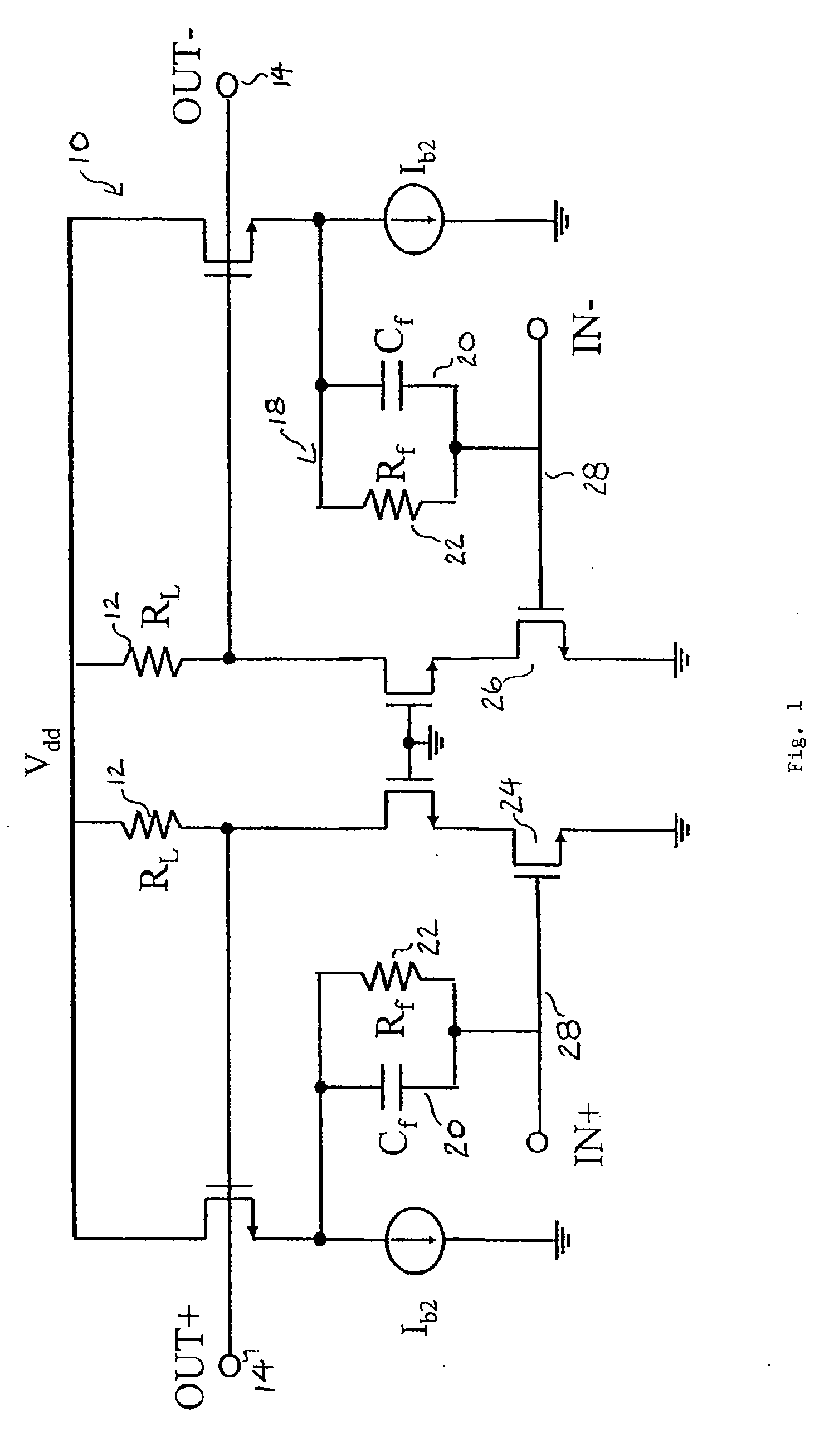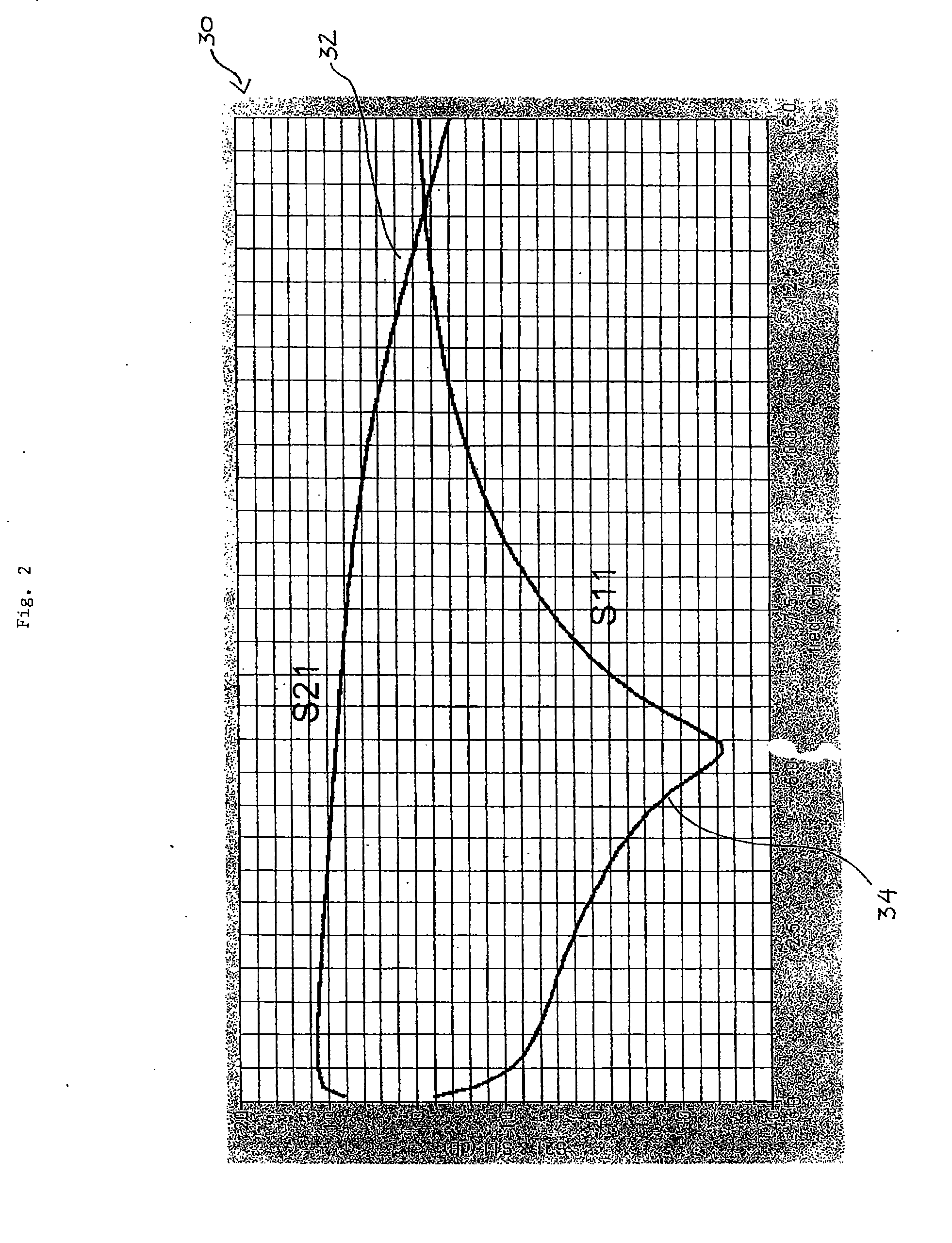Techniques for designing wide band low noise amplifiers
a wide band, low-noise technology, applied in the direction of low-noise amplifiers, amplifier modifications to reduce noise influence, amplifier modifications to extend bandwidth, etc., can solve the problems of large chip area of inductors, large power consumption of multiple amplifier stages, and high cost of manufacturing economics, etc., to achieve low-noise
- Summary
- Abstract
- Description
- Claims
- Application Information
AI Technical Summary
Benefits of technology
Problems solved by technology
Method used
Image
Examples
Embodiment Construction
[0026] The invention will be illustrated in more detail with reference to the following description. However, it should be understood that the present invention is not deemed to be limited thereto.
[0027] Referring now to FIG. 1, there is shown a schematic representation of a known resistive feedback amplifier circuit 10 for amplifying communications signals. In the amplifier circuit 10 a differential input signal could be applied to the differential input terminals 28. The differential input signal could thereby be applied to the input transistors 24, 26 for amplification. The input transistors 24, 26 were preferably provided with the feedback loops 16, 18, respectively. The feedback loops 16, 18 typically included the feedback resistors 22 for input matching purposes to thereby extend the bandwidth of the circuit 10. The feedback capacitors 20 could also be provided in the feedback loops 16, 18 in parallel with the feedback resistors 22 in order to further extend the bandwidth.
[0...
PUM
 Login to View More
Login to View More Abstract
Description
Claims
Application Information
 Login to View More
Login to View More - R&D
- Intellectual Property
- Life Sciences
- Materials
- Tech Scout
- Unparalleled Data Quality
- Higher Quality Content
- 60% Fewer Hallucinations
Browse by: Latest US Patents, China's latest patents, Technical Efficacy Thesaurus, Application Domain, Technology Topic, Popular Technical Reports.
© 2025 PatSnap. All rights reserved.Legal|Privacy policy|Modern Slavery Act Transparency Statement|Sitemap|About US| Contact US: help@patsnap.com



